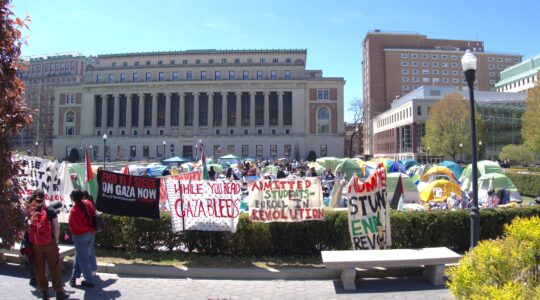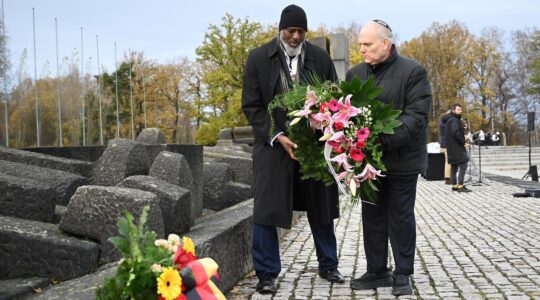I have seen the Jewish future and it is small…
Compact, shoulder to shoulder — young and old, preschoolers, high schoolers, singles, same sex couples with their toddlers, middle-aged parents whose disaffected teens find themselves tapping along in spite of themselves, grandparents with their grandchildren.
No high ceilinged church-like space required. No sound systems or balconies.
Some of the lay leaders (men and women) have been to day school but not all. Many are under 30 and in spite of being part of the most technologically advanced generation in history, they unplug and hit the floor in white kittels for the priestly Aleinu. They bring their kids close to the shtender [lectern], letting them soak up the electricity and power of voices in uncomposed harmonies, voices of all kinds, trained, not, in key and not, praying.
In brokering a now three-year-old experiment of synagogue (Kane Street) meets alternative minyan (Altshul) for the high holidays, music leader Joey Weisenberg has hit upon a key to the future. Here, 32-year-old Jewish educator Amanda Pogany can deliver a drash [sermon] with the same authority and reception as Rabbis Josh Gutoff and Simcha Weintraub and physics teacher Bob Marx . Here, young passionate Jews, educated or educating at places like Mechon Hadar, are sparking a renewal in the music and liturgy of their great-grandfathers’ synagogues.
As this alternative service has grown to bursting, it is clear that this combination of alternative minyanaires and lifetime synagogue members hungry for an intense, visceral, spiritual experience is a potent combination.
One way Federations and Jewish foundations can help grow the Jewish people is to help synagogues hire this young crew. They are in the process of transforming spiritual practice, in part by bringing it back to old-fashioned roots. Their key is participatory, not performative.
Help synagogues give them a platform and give them serious paid positions so they can help grow this spirit and practice, not once a year but throughout the year. They have a passion that is so infectious that “renewal” will walk through the door.
But the process must be given time. Synagogue culture has to adapt as young people grow comfortable with being part of an institution (for the record, some of the altschulers have become members of Kane Street).
Make grants to enable synagogues to repurpose their spaces to a more ‘shtieble-like” atmosphere and the reverberations may well result in stronger synagogues and a newfound recognition that the communal Jewish world has something to offer young and old alike.
While much is made about culture replacing religion as a doorway to the “unaffiliated,” there’s nothing like source material to give people a primal experience of where they come from.
If you hear it often enough, when you’re young enough, cantillation, niggunim, and the rest of the close to the bone music that has carried our people through thousands of years will start to feel like home.
Support the New York Jewish Week
Our nonprofit newsroom depends on readers like you. Make a donation now to support independent Jewish journalism in New York.
That comfort might inspire some folks to study more. Who knows, the joy of the experience might stay for life.
Culture is always strengthened when a new generation digs deep into source material. Let at least one Petri dish be situated in the original gathering place. Let these young ones help reshape and reinvent our tradition in our midst.
Elise Bernhardt is president and CEO of the Foundation for Jewish Culture.
The New York Jewish Week brings you the stories behind the headlines, keeping you connected to Jewish life in New York. Help sustain the reporting you trust by donating today.




